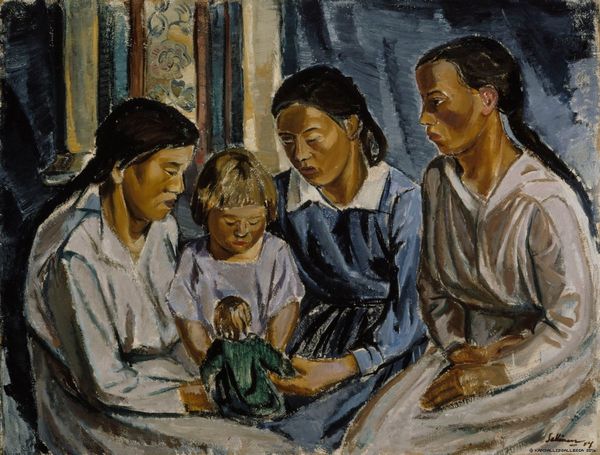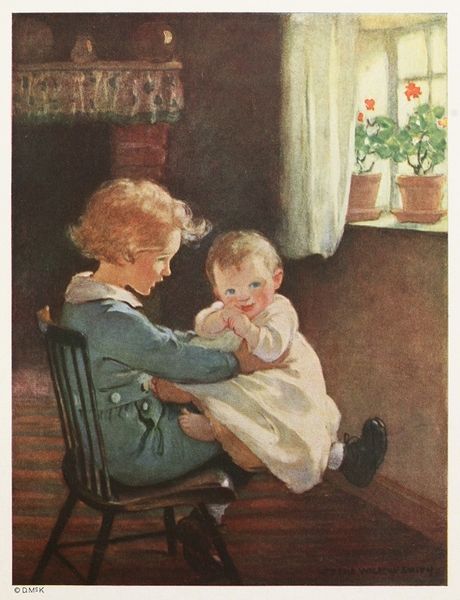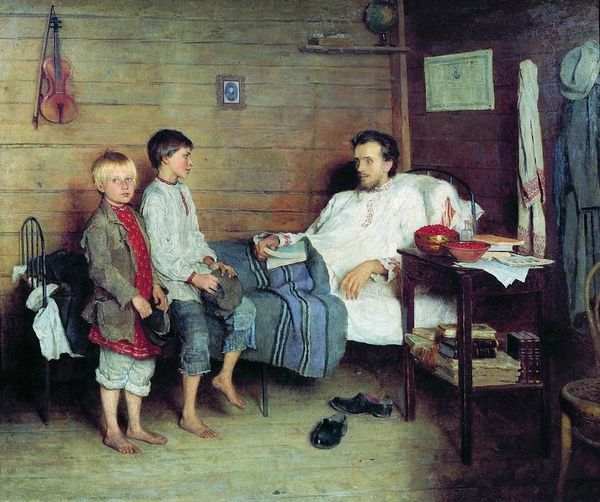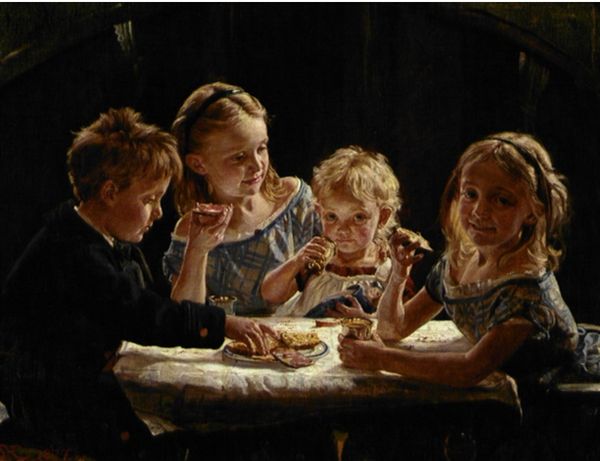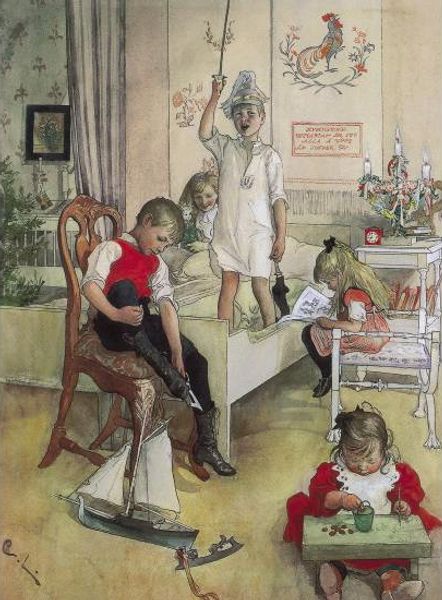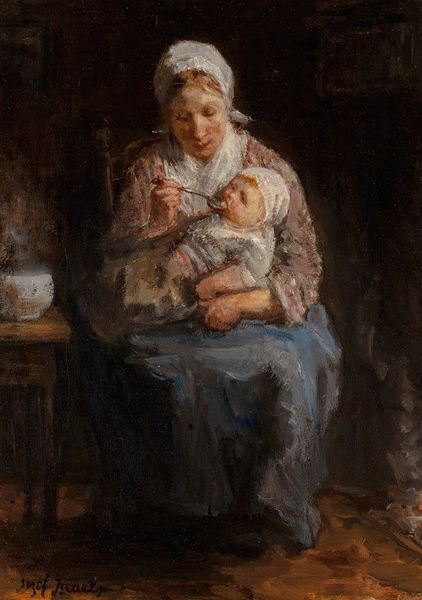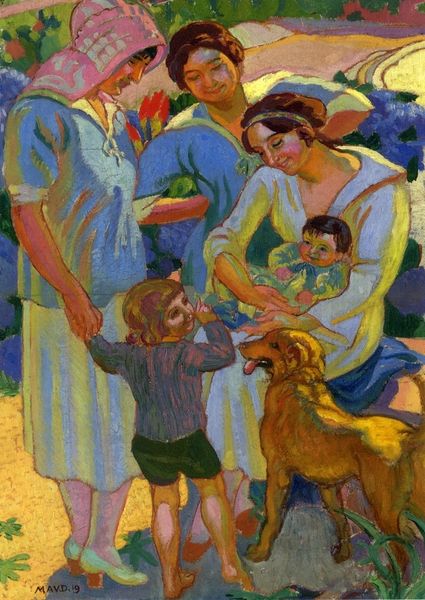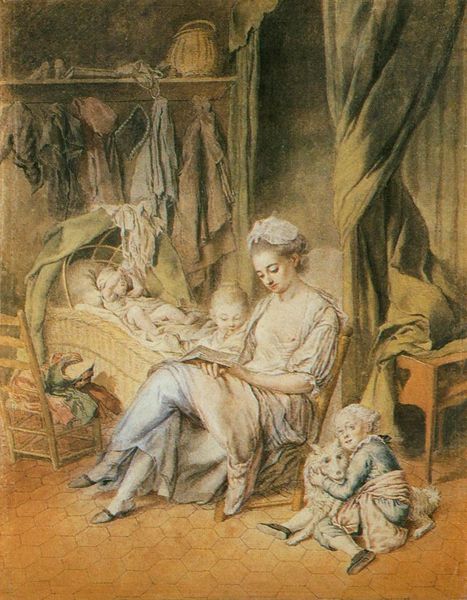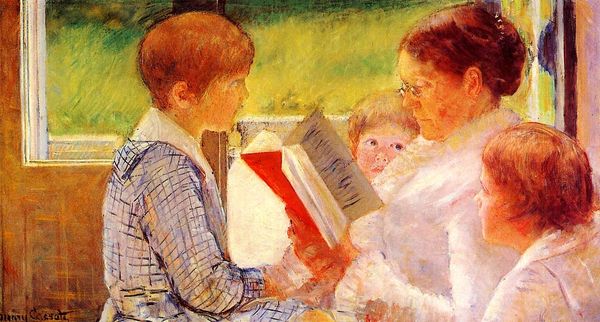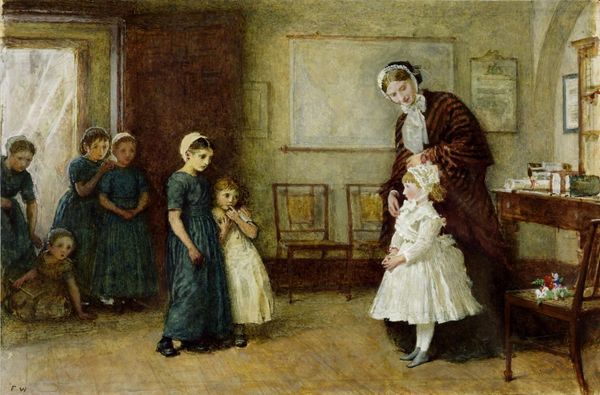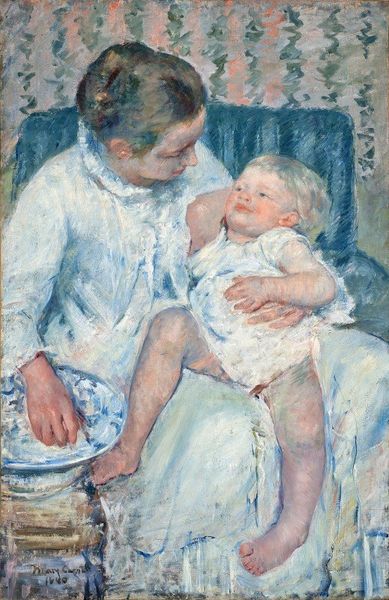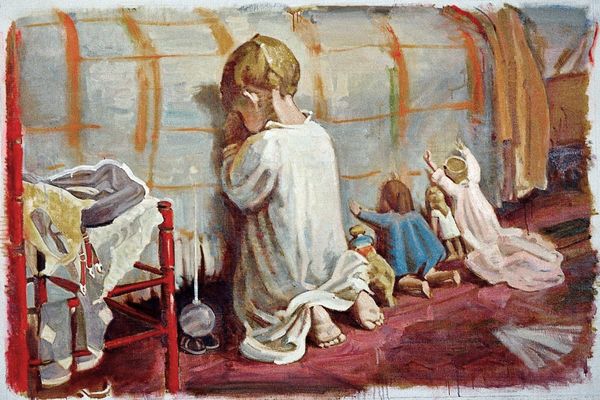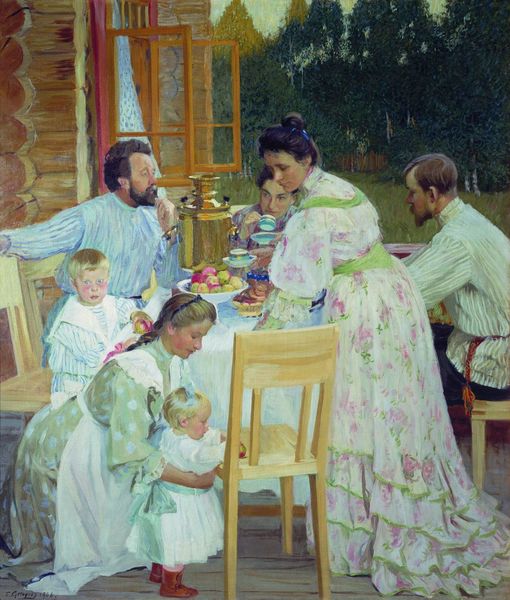
#
possibly oil pastel
#
oil painting
#
child
#
acrylic on canvas
#
painting painterly
#
animal drawing portrait
#
portrait drawing
#
portrait art
#
watercolor
#
fine art portrait
#
digital portrait
Dimensions: 50.8 x 60.9 cm
Copyright: Public domain
Editor: This is Ethel Léontine Gabain’s “A Crèche” from 1942, housed at the Imperial War Museum. It's such a warm, domestic scene. What do you notice about its composition? Curator: Observe how the artist employs a relatively muted palette. Notice the pervasive use of soft browns and creams punctuated by the bright pastel clothing on the children and the blue baby bathtub and play table. Do you see how that carefully limited palette impacts the overall feeling of the piece? Editor: I do, the painting looks muted. The colour composition makes my eye move across the children and the workers' forms, following the shapes of their faces. What is interesting about this shape selection? Curator: Consider how the painting avoids sharp, angular forms and embraces the smooth shapes and soft rendering to depict children. The result is that their innocence becomes the subject through these intentional choices about texture, composition and, to circle back, color palette. Doesn't the artist draw out something truly compelling by playing with these elements? Editor: Absolutely. The visual language really emphasizes the gentle vulnerability. The painting almost abstracts this crèche by bringing its pictorial parts to an emotional whole. Is that how it’s been formally received, though? Curator: Reception varies. Viewing this piece through the lens of pure form offers valuable insight into how an artist can evoke such potent feelings using limited technical means. It certainly encourages deeper thought about form and expression. Editor: This piece has definitely changed my perspective about how texture and form create our perception of "emotion" as part of artwork, as much as any historical reference!
Comments
No comments
Be the first to comment and join the conversation on the ultimate creative platform.
